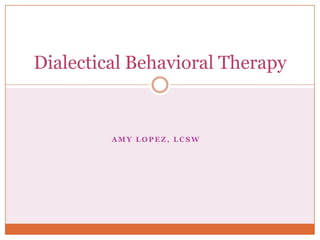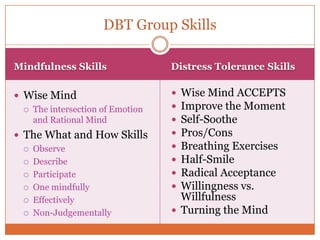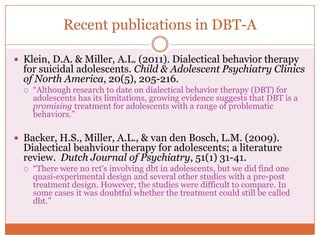Dialectical Behavioral Therapy (DBT) is a model of therapy that uses skills training and the therapeutic relationship to manage strong emotions and behavioral dyscontrol. It was originally created to treat symptoms of Borderline Personality Disorder, primarily suicide and self-harm. DBT uses group work, individual therapy, and self-monitoring to change target behaviors. Multiple studies have found DBT to be an effective evidence-based practice for reducing suicidal behaviors, self-injury, and psychiatric hospitalization compared to treatment as usual. However, DBT requires strict adherence to the treatment manual and all four components of individual therapy, skills training group, phone coaching, and therapist consultation in order to achieve these results. There is ongoing research into adapting




















